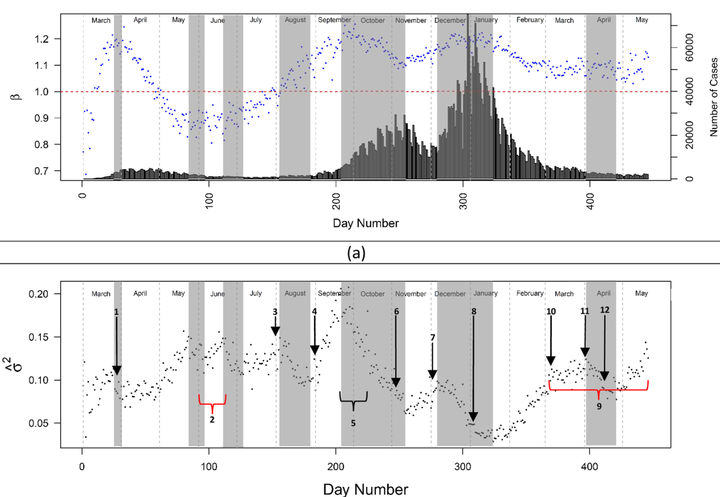
Abstract
We investigated daily COVID-19 cases and deaths in the 337 lower tier local authority regions in England and Wales to better understand how the disease propagated over a 15-month period. Population density scaling models revealed residual variance and skewness to be sensitive indicators of the dynamics of propagation. Lockdowns and schools reopening coincided with increased variance indicative of conditions with local impact and country scale heterogeneity. University reopening and December holidays reduced variance indicative of country scale homogenisation which reached a minimum in mid-January 2021. Homogeneous propagation was associated with better correspondence with normally distributed residuals while heterogeneous propagation was more consistent with skewed models. Skewness varied from strongly negative to strongly positive revealing an unappreciated feature of community propagation. Hot spots and super-spreading events are well understood descriptors of regional disease dynamics that would be expected to be associated with positively skewed distributions. Positively skewed behaviour was observed; however, negative skewness indicative of “cold-spots” and “super-isolation” dominated for approximately 8 months during the period of study. In contrast, death metrics showed near constant behaviour in scaling, variance, and skewness metrics over the full period with rural regions preferentially affected, an observation consistent with regional age demographics in England and Wales. Regional positions relative density scaling laws were remarkably persistent after the first 5-9 days of the available data set. The determinants of this persistent behaviour probably precede the pandemic and remain unchanged.